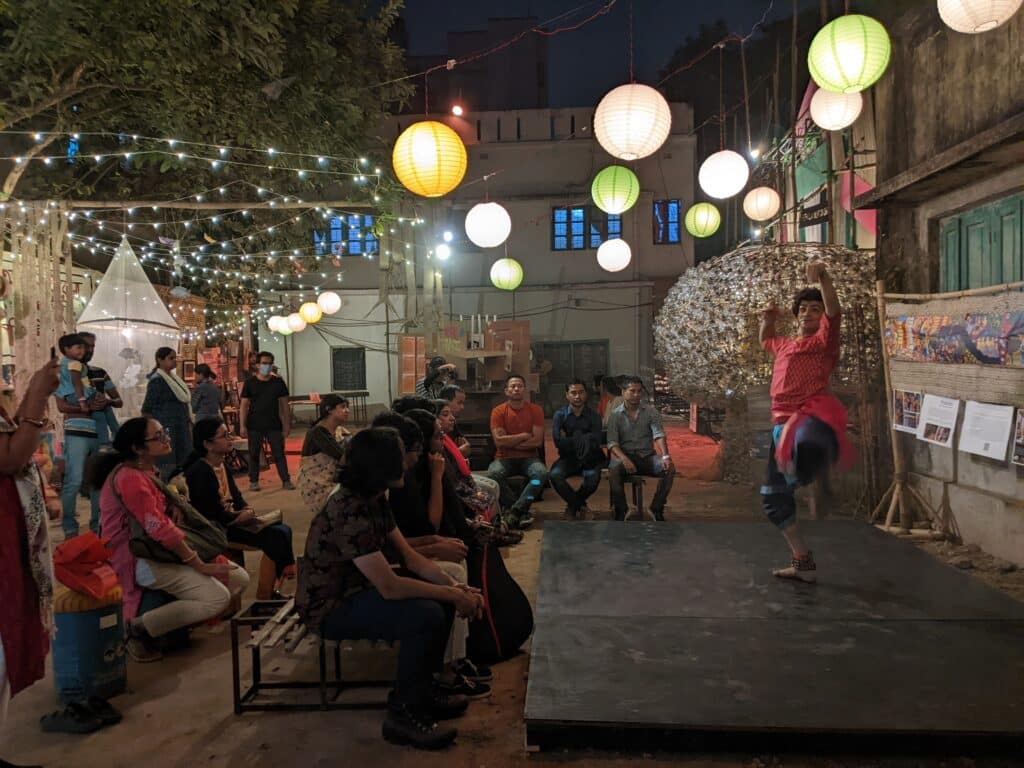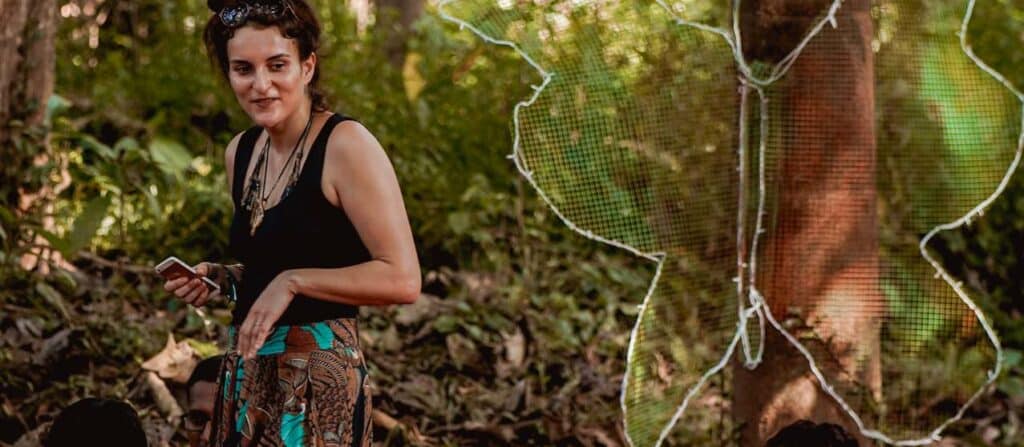The Pickle Factory Dance Foundation aims to find new homes for the dance and movement practice in India. The groundbreaking festival is back after a pandemic-induced hiatus to reimagine the landscape of Kolkata and bring the arts, the community and the city together. By taking over community spaces like the East Kolkata Wetlands and the Behala Nutan Dal, the third edition reflects the varying colours of the city and its people and the evolution of public sentiments, whilst encouraging spontaneous engagement with the city’s spaces. The Pickle Factory Season 3 is being held between Nov 2022 and Feb 2023 across different venues ranging from conventional auditoriums to offbeat venues like residences, workspaces, construction sites and dilapidated buildings.
To know more about what’s happening this season at the Pickle Factory, jump right into our conversation with Vikram Iyenger, the founder and director of the Pickle Factory Dance Foundation. Edited excerpts:
The Pickle Factory is coming back after a gap of three years. What’s familiar and what’s new?
The Pickle Factory Dance Foundation is about embracing the live experience of performance and the special relationships formed among artists, audiences, communities and spaces. Creating spaces to encounter dance, where dance can enter, engage and energise is at our core. During the pandemic, therefore, we skipped performances altogether and focused on proposing and exchanging ideas about dance as a practice, the spaces and support systems we need and what makes the experience of performance necessary in the first place. So the opportunity to create another live season after three years naturally became about re-entering and reclaiming spaces and making the presence of dance felt in the bones of the city. Therefore the name #TakeTheCityKolkata. It is about bringing people together for arts and community experiences and asking ourselves how we can better inhabit the city’s spaces, imagination and consciousness.

What is the scale of this year’s festival? What are some of the ways that the audience can attend or view what’s on offer?
Scheduled between Nov 2022 and Feb 2023, the four-month season is conceived as an explosion of dance and movement work in various spaces across Kolkata– on the streets, in a puja pandal, in residences and workspaces, by the river, in gardens, old buildings and construction sites, inside trams and anywhere else possible. This season, there will be performances, workshops, residencies, films, exhibitions, conversations, conferences, community interventions and more – featuring artists and guests from India and abroad. There are also various opportunities such as short workshops for arts training and management, filming performances and other different processes aimed at practitioners of all kinds to hone their skills and develop their capacity. All in all, how you choose to enter and engage with the season is completely up to you: there are options galore!
How does #TakeTheCityKolkata reflect the festival’s engagement with the city and public spaces in Kolkata?
Since season 2, we started naming the seasons to give ourselves some sort of a curatorial focus. #TakeTheCityKolkata signifies an active taking over of the city’s spaces, imagination and consciousness in a celebratory, unapologetic manner. Each month of this edition responds to this provocation differently. ‘Spaces for Community’ focuses on creating temporary spaces for community experiences, sharing and growth. ‘Spaces for Dialogue’ focuses on creating spaces of dialogue, raising questions about how we live and inspiring new thinking and responses. ‘Spaces for Practice’ focuses on creating spaces for artistic process, discovery, training and making. ‘Spaces for Performances’ focuses on creating spaces and neighbourhoods to encounter, enjoy and engage with performance in all the above ways and more!
The spaces we work in are very varied. Formal performance spaces are a very small part of our venues. In November, we transformed a community ground in Behala (South Kolkata) into a thriving hub and pop-up performance space for the weekend, involving the entire local community. In December, we are staging performances in educational spaces to shed light on how we view the body as a vehicle of expression. In January, we will be working mainly in different kinds of rehearsal spaces– from the equipped to the makeshift. And in February, we will invite the audience to rethink the idea of a performance venue by showcasing dances in unconventional spots, such as a tram depot, and a riverside venue, among others.
Dance is a varied artform, with various styles ranging from classical and folk. How do you represent this diversity through the festival?
The Pickle Factory Dance Foundation’s definition of dance includes any performance language that emerges from movement. These include, but are not limited to classical and contemporary dance, performance art and regional indigenous forms (best described as total theatre, physical theatre, circus theatre, puppet theatre) that initiate spaces of exchange and dialogue among artists, forms and audiences that may never have encountered one another, otherwise. Audiences will encounter Odissi, Bharatnatyam, various languages of contemporary dance, street dance, traditional theatre forms, physical theatre and comedy, and much more.

What suggestions would you have for a first time visitor?
Be open. Try to leave your assumptions behind, and be ready and willing to be surprised, delighted and moved by what you see. Take chances, see what you normally would not, along with what you normally would. Experience and also question. Talk to us, talk to the artists, and talk to your fellow audience members (but not during the performance). Dance is better shared – in every way. Expand your palette, and allow dance to ‘take you’ like it ‘take(s) the city’.
What are some of the must-see acts or performances from this year’s festival?
We had some incredible line-ups throughout November such as Surjit Nongmeikapam’s Meepao, Shashwati Ghosh’s Mahamaya, Paramita Saha and the Continew Collective’s Detritus. The community from East Kolkata Wetlands grabbed attention in the way they displayed their generation-old knowledge and practices that has kept the city alive and thriving through a living library. The finishing touches to November were brought about by our fabulous mural artists and painters who resuscitated life into the grounds of Behala Nutan Dal, a festive pavilion in Kolkata. In December, the must-sees include 111’s poignant duet by Joel and Eve; Kattaikuttu Sangam’s Tavam and Saskia’s one-of-a-kind parenting and dance workshop. January is exclusively catered to movement artists in Kolkata. We have a fantastic series of workshops happening with artists Joshua Sailo, Aseng Borang, Preethi Athreya and Piyal Bhattacharya.

Pickle Factory is a very unusual name for a dance festival. Can you tell us why this particular name was chosen?
The name of our company is Pickle Factory Dance Foundation and one of our signature activities is the Pickle Factory Season. The name Pickle Factory Dance Foundation plays on our associations with pickles, especially in the Indian context. It immediately suggests taste, rasa, mouth-watering experiences, and a range of flavours coming together. That is what we propose dance is and should be. The word ‘factory’ underlines that while artists are offering us all kinds of beautiful experiences to savour, these experiences are created and crafted with a lot of labour and rigour on the dance floor, day after day with blood, sweat and tears. There is nothing pristine about creating a piece of performance. There is as much hard work and perspiration as there is passion and inspiration. Making art is a laboratory and factory process, and it is through this rigorous process of creative impulse, trial, error, and discovery that the most amazing flavours emerge.
For more articles on festivals in India, check out our Read section of this website.




Share on